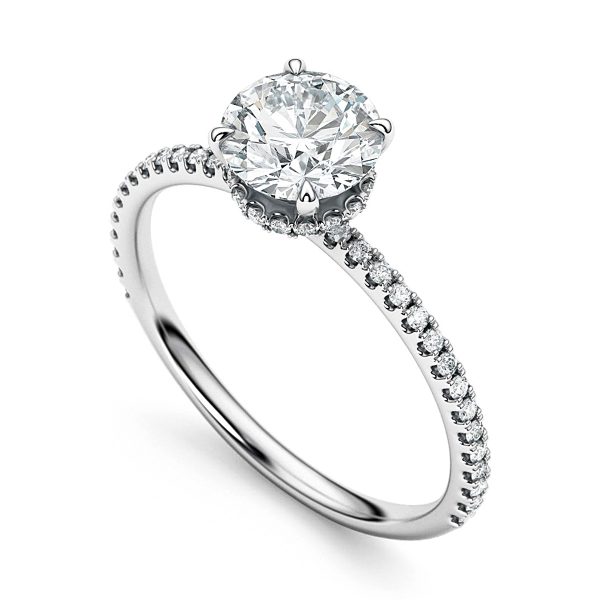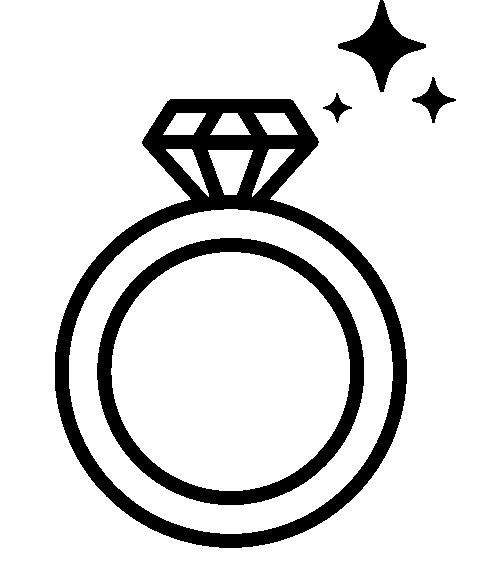
When you try to picture an impressive engagement ring, the solitaire engagement ring is what often comes to mind. A single, large stone uncluttered by added embellishments. It’s straight forward. It’s direct. There are no distractions. A solitaire engagement ring is defined by the incorporation of a sole- or solitary- diamond shaped into whichever cut you please. Add a clean, polished band to compliment the main diamond and nothing else. The elegance in its simplicity has made the solitaire engagement ring the most consistently popular style for decades. In fact, the brilliant round cut solitaire engagement ring has dominated the market ever since the diamond engagement ring was commoditized. For good reason, at that. This style of ring creates a vivid contrast. Observing eyes are drawn to one thing and one thing only: a big, beautiful diamond. In the 1950s, an alternative to the round cut solitaire was introduced into the market. The oval cut solitaire was meant to create a variation of the round cut, with an elongated shape and more curvature all the while maintaining a similar sparkle to the round cut. Its unique shape is more flattering to slender fingers and small, dainty hands.
In the 1980s, emerald cuts and square princess cuts were introduced in order to reduce diamond waste and allow buyers to get more sparkle relative to the diamond’s price. The straight edges of a princess cut were meant to combine the sparkle of an oval cut with the clean look of a square cut diamond. A princess cut solitaire combines sharp, uncut corners while maintaining maximum brilliance. The emerald cut is similar in that its shape is also rectangular. The corners are cropped and the diamond face is cut in steps, originally meant to maximize clarity and inner light of shaded gemstones. This cut allows for a deeper appreciation of diamonds with higher color and clarity grades. Ample light passes through and is reflected in abundance.
Each of these cuts can be complimented with a delicate prong setting, gripping the center stone tightly while providing gentle contrast to its luster. They elevate the diamond and secure it in place while adding a slight shine from the smooth metal texture. The shape of these prongs vary and impact the overall look of the diamond differently. Rounded prongs are smoother, subtle, and look seamless on a round cut diamond. Flat or pointed prongs come off sharper, working perfectly with the straight cuts of rectangular diamonds. If your goal is to add a modest detail to set your solitaire engagement ring apart from the rest, a lovely four-prong setting can provide the accent you are looking for.
The main allure of solitaire engagement rings lies within the beauty of quality and simplicity. An honest truth exists within the saying less is more. Clutter is often times unnecessary. Although a ring graced with a sparkling pave of diamonds on the band is dazzling, it might not be what suits her style best. Sometimes, it pays to let the center stone’s beauty be the uninterrupted center of attention. Recent fashion trends have shown that there is a definitely a desirable elegance in simplicity. Her ring should, after all, suit her style. The solitaire engagement ring offers a clean and unparalleled form of awe-striking beauty. This style is perfect for those seeking to communicate their powerfully unassuming sentiments of commitment in a way that’s deeply personal.
By the way, you should check out the most outstanding diamond engagement rings our jewelry store in Montreal has to offer, you won’t regret it!





 My Account
My Account  My Bag
My Bag  My Wishlist
My Wishlist 
